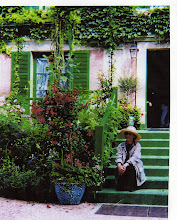Michael Pollan, “Deep Agriculture”
May 6th, 02009 by Kevin KellyMaking farmers cool again
Farming has become an occupation and cultural force of the past. Michael Pollan’s talk promoted the premise — and hope — that farming can become an occupation and force of the future. In the past century American farmers were given the assignment to produce lots of calories cheaply, and they did. They became the most productive humans on earth. A single farmer in Iowa could feed 150 of his neighbors. That is a true modern miracle. “American farmers are incredibly inventive, innovative, and accomplished. They can do whatever we ask them, we just need to give them a new set of requirements.”
The benefit of a reformed food system, besides better food, better environment and less climate shock, is better health and the savings of trillions of dollars. Four out of five chronic diseases are diet-related. Three quarters of medical spending goes to preventable chronic disease. Pollan says we cannot have a healthy population, without a healthy diet. The news is that we are learning that we cannot have a healthy diet without a healthy agriculture. And right now, farming is sick.
Pollan outlined what this recovery for American farmers and food producers should be. First a post-modern food system should be “resolarized.” Right now it takes 10 calories of fossil fuel to manufacture 1 calorie of food on average, and 55 calories to produce 1 calorie of beef. If any industry should be solar-based it should be food, which was the “original solar economy.” Instead, right now “we are eating oil.” Cheap oil and farm policies subsidize the 5 main crops (and only those crops), upon which the rest of our cheap food system is based. These main crops are planted as monocultures, which require cheap pesticides and fertilizers and produce wastes that are all problems in themselves. Pollan’s solution is not to dismantle the food system but to redirect it. Because of the long-term planning and learning that stewarding land requires, he believes subsidies of some type are essential for agriculture. Agriculture, he stated, should not be a freemarket. By picking the proper incentives we can re-localize, re-solarize, and revive the healing power of balanced farms and wholesome gardens.
Governments should reward farmers for diversifying away from monocultures. Pollan gave a few examples of where this has worked at scale. They should be rewarded for growing cover crops with the benefit of reducing erosion. Rewarded for returning animals to the mix. Rewarded for the amount of carbon they sequester in soil. Rewarded for halting urban sprawl by keeping farmland intact. In fact farmland should find a similar status as wetlands; developers and communities get “credit” for retaining farmland. Farmers should be rewarded for localize food provision. If only 2% of government contracts for food (as in school lunch programs, or government-run hospitals) required that the food be produced within 100 miles, it would transform the food system.
How might such change happen? Only if consumers and citizens demand it. One thing that might help is if web cams and images of the actual feed lot, or slaughterhouse, were required to be available for food that flowed through it. Imagine getting a carton of milk that showed not a metaphorical alpine meadow, but the real cages of the real dirty cows that produced that liter of milk. Or put a second calories count on labels, this one showing how many calories of energy it takes to deliver the item to you.
The major problem with his vision? He says there are simply not enough farmers. Only 1 million now feed the US and other people of the world. Many more people, many more college educated people, many more innovators and entrepreneurs, and many more backyard gardeners need to produce this new food system. Start in educational programs, such as one promoted by Alice Waters, where kids learn to grow food, cook, and eat smarter. “Make lunch an academic subject.” Follow the lead of Michelle Obama and make turning lawns into organic gardens fashionable, respectable.
Make farms and farmers cool again









